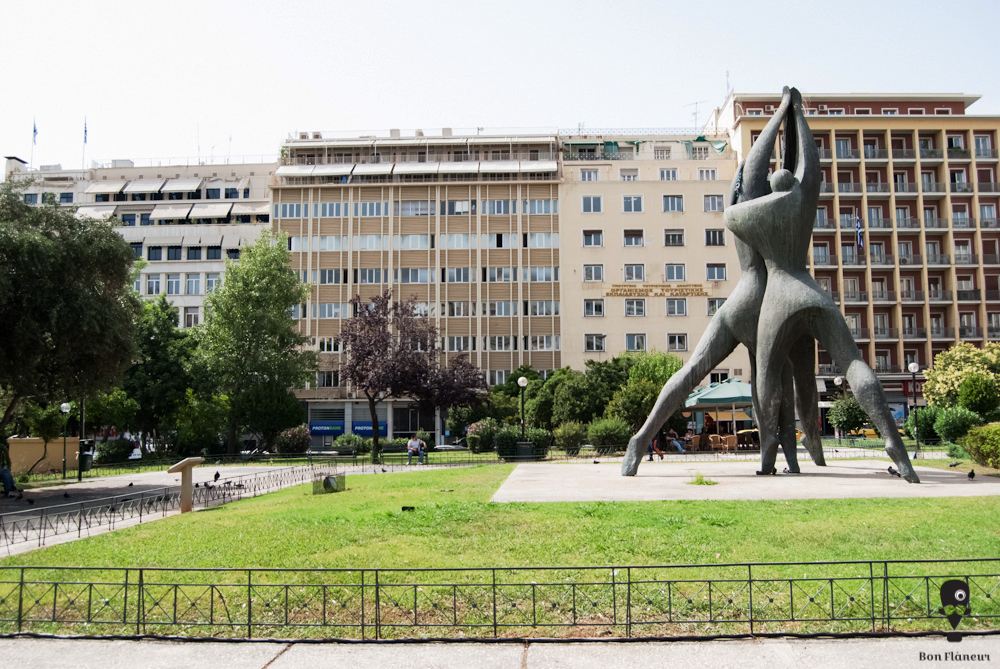Klafthmonos Square
The Klafthmonos Square is also called Ethinikis Simfiliosis (National Reconciliation) Square.
Location
Timeline
Modern and Contemporary era (1821 - )
1833 Landscaping around that era.

The Klafthmonos Square is also called Ethinikis Simfiliosis (National Reconciliation) Square.
Home > Athens > History and Archaeology > Klafthmonos Square




Although it resembles a garden, Klafthmonos is a square, and in fact one of the most historic ones in the city. Near the centre, the eight-metre impressionistic bronze statue of the “National Reconciliation” made by Vassilis Doropoulos (1989) stands. It symbolizes the fraternization that followed the Greek Civil War (1946-1949) between the communists and the right. The square is also called Ethinikis Simfiliosis (National Reconciliation) square. The architectural failures of today’s square are obvious. With the placement of the sculpture in the centre of the square, the view to the University from the south side is lost and the high planting on the same side hides parts of the Themistocles wall.
This square was the garden of the first provisional royal palace that was situated on Paparigopoulou Street (Vouros-Dekozis house) and the first space in the new capital designed on the basis of a garden architectural study. The first urban plans of the city show that before it became the “garden of the old palace”, plans included a square at this point. It had palm trees, poplars, a fountain in the centre, a water tank with goldfish, four entrances and the Royal Mint, which was later the ministry of finance and was demolished in 1939. It took its name from the Greek word κλαυθμός (klafthmos), which means crying. The name came from an article by the chronicler Dimitrios Kambouroglou in 1878 in the newspaper Estia, who used it in reference to the civil servants that had been made redundant and gathered here to demand their rehiring by the Ministry of Interior, which was near the square. The name of the square has changed many times: “Mint Square”, “March 25 Square”, “Democracy Square”, “Garden of the Ministry of Finance”, “Klafthmonos (ie Crying) Square”, “National Reconciliation Square” (which is official today). Toward the end of the 19th century, the square became the first site of public protest in the world, where water-cannons were used against protesters.
Melampianaki E. (2006), Οι πλατείες της Αθήνας 1834-1945, διαδικασία διαμόρφωσης, λειτουργία- πολεοδομική σημασία, [The squares of Athens 1834-1945, formation process- functionality- urban design importance], NTUA, Ph.D.
Vassilopoulos Ch., (2011), Οι μεγάλες οικονομικές κρίσεις στην Ελλάδα, [The economic crisis in Greece], Time Machine
http://www.mixanitouxronou.gr,
Last visit 28/11/2012
Yohalas T., Kafetzaki Τ., (2013), Αθήνα, Ιχνηλατώντας την πόλη με οδηγό την ιστορία και τη λογοτεχνία [Athens, Tracing the city guided by history and literature], ESTIA Bookstore
Biris K. H. (1966), Αι Αθήναι από του 19ου εις τον 20ον αιώνα, [Athens from the 19th up to the 20th century], 5th edition 2005, Athens, Melissa
1833 Landscaping around that era.
Share